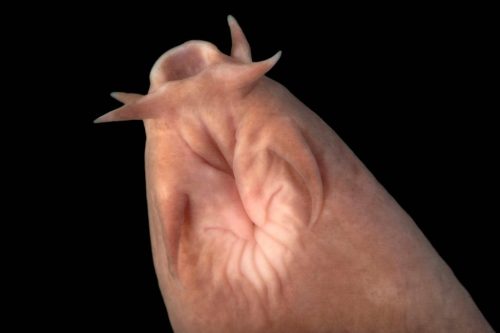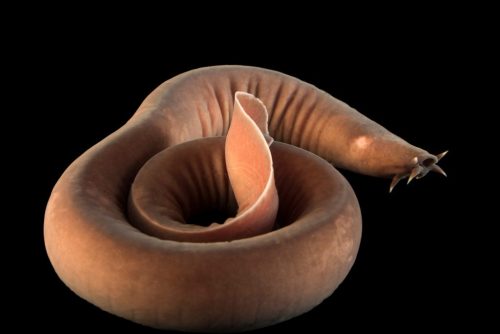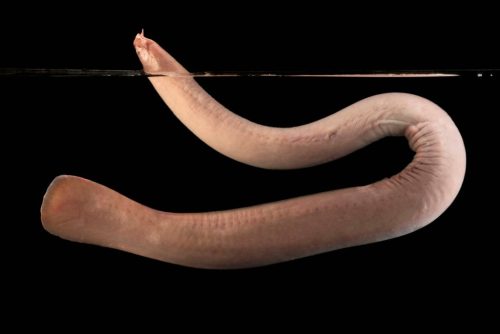uncharismatic-fauna:The Handsome HagfishRequested by @anxiouspuddleHagfish, of the family Myxini, ar
uncharismatic-fauna:The Handsome HagfishRequested by @anxiouspuddleHagfish, of the family Myxini, are a group of 75 jawless fish species that reside in the Pacific, Atlantic, and Indian Oceans. Although they are vertebrates, they are the only known animals that have a vertebral column but no skull. Many scientists consider them to be an evolutionary descendant of the ‘stepping stone’ between fish with and without jaws. Their evolution and juvenile development has been the subject of much study, trying to determine the pathway of the evolution of jaws, skulls, and eyes in vertebrates.Although they are sometimes mistaken for eels, hagfish have many easy-to-distinguish physical differences. For one, hagfish have a skeleton made of cartilage while eels have a harder bone skeleton. Secondly, Myxini species have open holes for gills rather than the slits more characteristic of eels and fish, and can also breathe through their skin if needed. Lastly, hagfish have no eyes or identifiable jaws; rather, their mouths are made of several protruding barbs and a set of horizontal cartilaginous structures that can expand outward. The main resemblance to eels is the body structure: hagfish have long flexible bodies and a paddle-like tail suited for smooth swimming. Hagfish species can be anywhere from 18 to 127 cm long, although the average length is around 50 cm, and their colors can range from pink to dark blue to brown. Like eels, little is known about hagfish reproduction. The mating process in particular is a mystery, although females will lay eggs year round. Eggs are laid in batches of 30-40, and can take up to 11 months to hatch– longer than many other jawless vertebrates. Freshly hatched hagfish are precocial, meaning they require no parental care or supervision. It is not known how long Myxini species age before they are sexually mature; however, it’s generally believed that they grow reproductive organs at around 35 cm. Evidence indicates that they are a hermaphroditic group. This means that at some point in their lives, hagfish change their sex from male to female or vice versa. Outside of mating, hagfish are solitary. They are benthic animals, spending most of their time at the bottom of the ocean. They feed mainly on polychete marine worms, although carcasses like whales are famous for drawing massive aggregations of hagfish. When presented with large meals, hagfish will burrow inside the body and consume it from the inside out. However, they only exhibit this behavior on dead or dying animals, and generally only prey on living creatures smaller than themselves. Myxini species can survive for months between feedings, as do many benthic animals. Similarly, hagfish are nocturnal and hide in burrows of mud on the ocean floor.Hagfish are preyed upon by many different animals, including sharks and harbor seals. To evade predation, they can twist themselves into complex knots or– perhaps most famously– produce large amounts of slime. This slime, or mucus, is produced from glands along the hagfish’s body. It’s protein-based and made of thick filaments that, when combined with salt water, expand into a thick membrane that doesn’t dissolve or dry out. The amount of slime produced seems only dependent on how much water is available and how long the hagfish perceives a threat. If ingested, the slime can choke a potential predator or clog its gills, giving the hagfish ample time to escape. Conservation status: Hagfish are fairly common throughout the ocean, although some species are threatened. Although they are part of human diets in some countires, the main threat comes from the lack of food available; as larger marine fauna like whales and sharks disappear, the amount of carcasses for Hagfish to feed on also diminishes.PhotosAndy MurchJoel Sartore -- source link
#reblog#hagfish#myxini#cyclostomata#agnatha#vertebrate#marine biology



